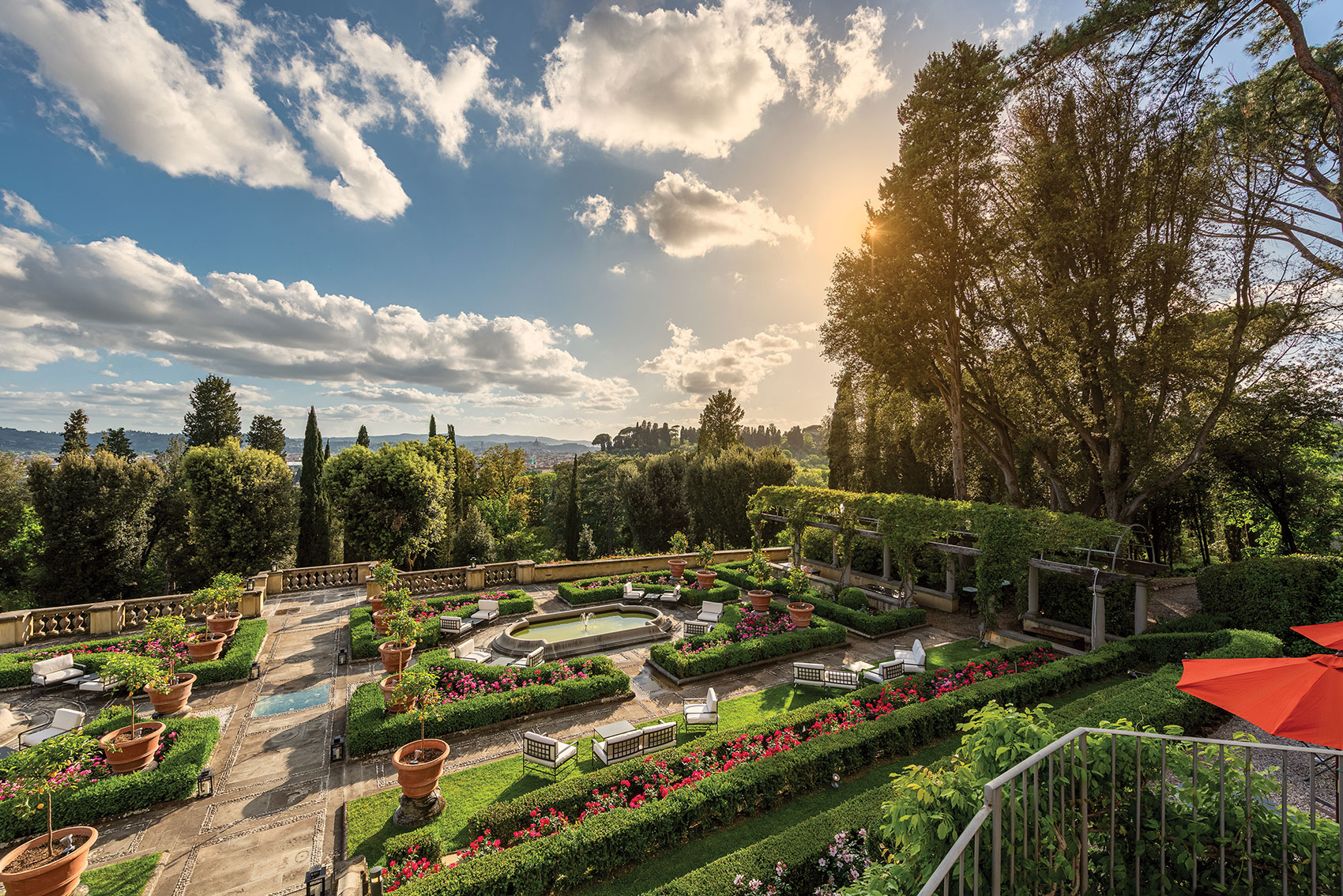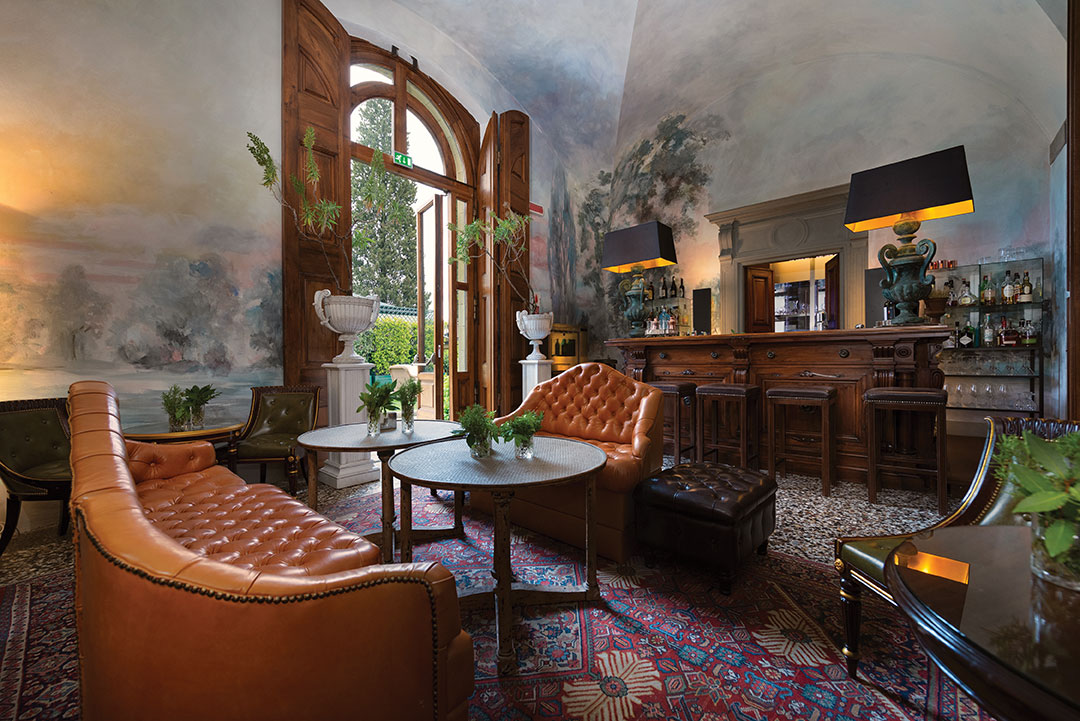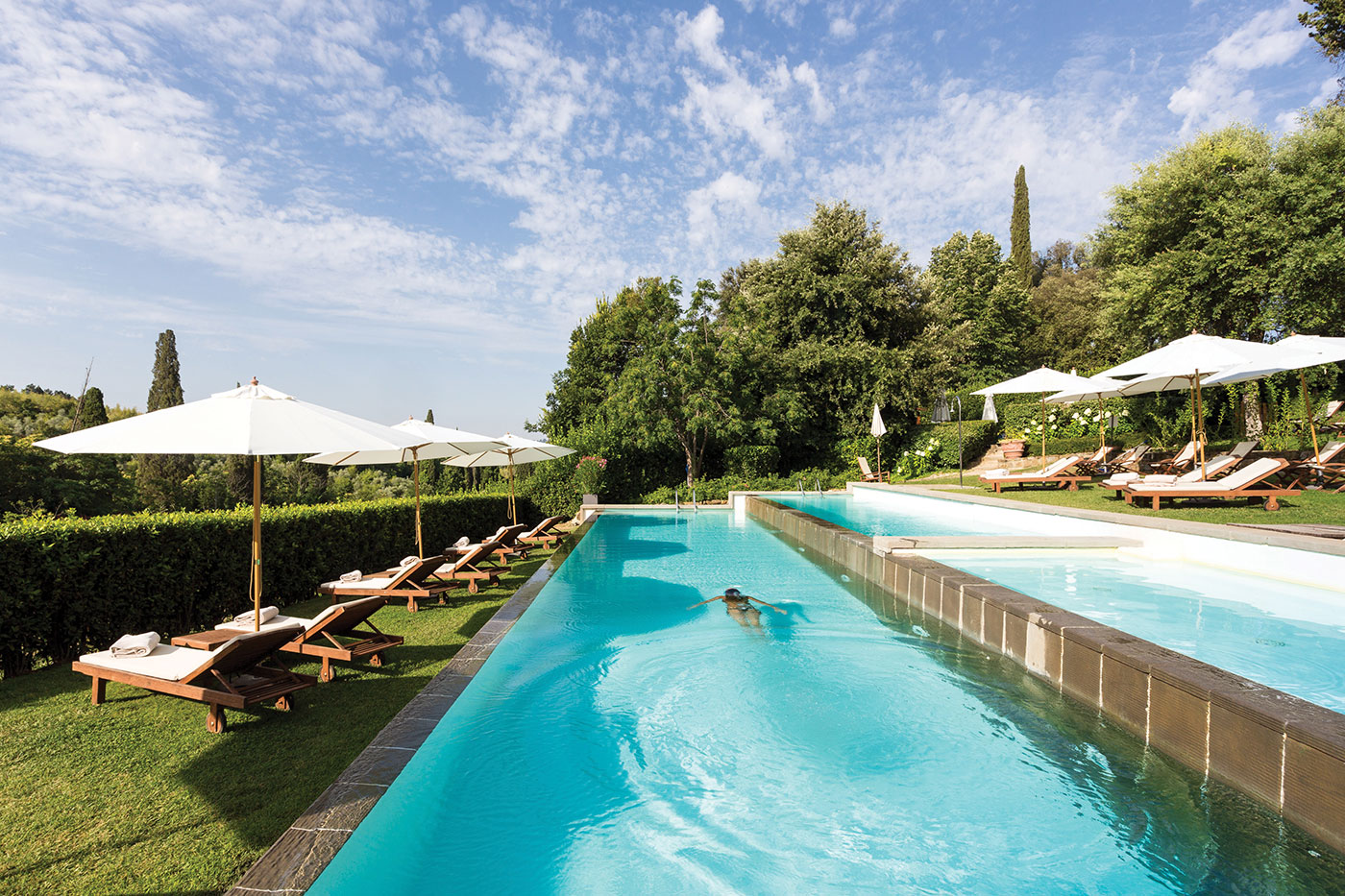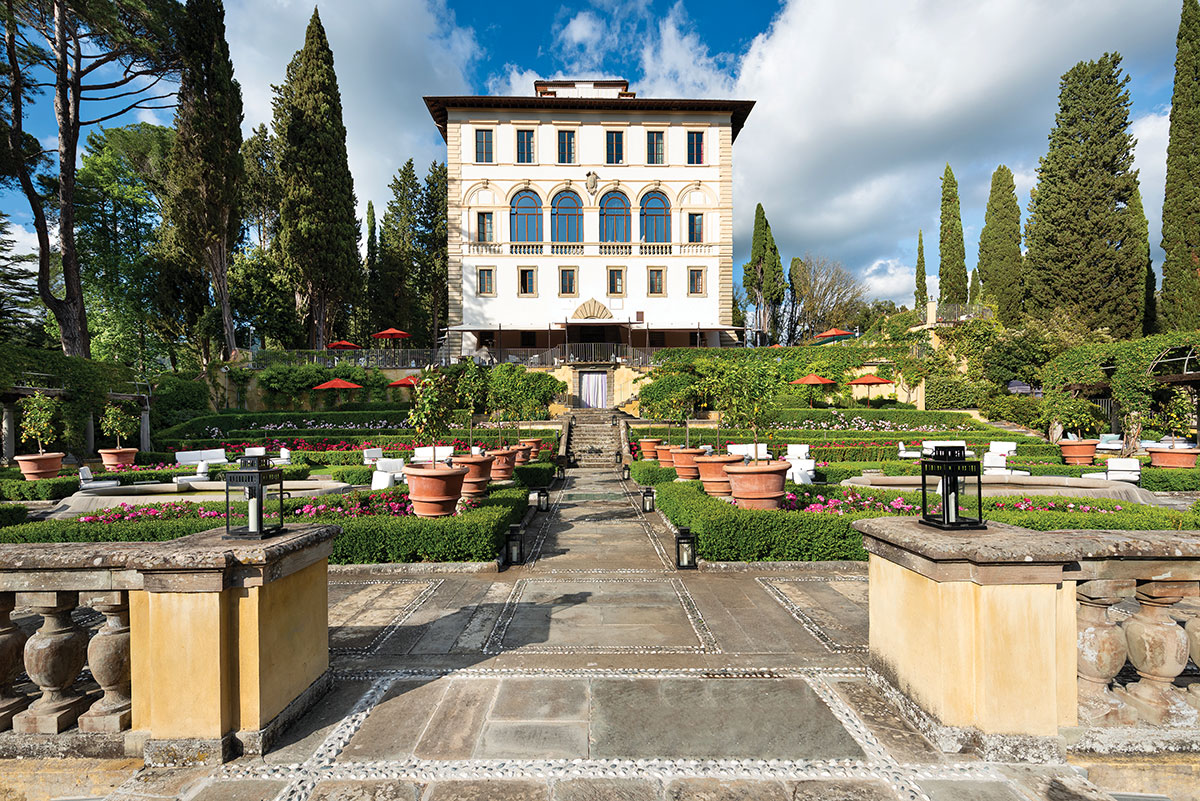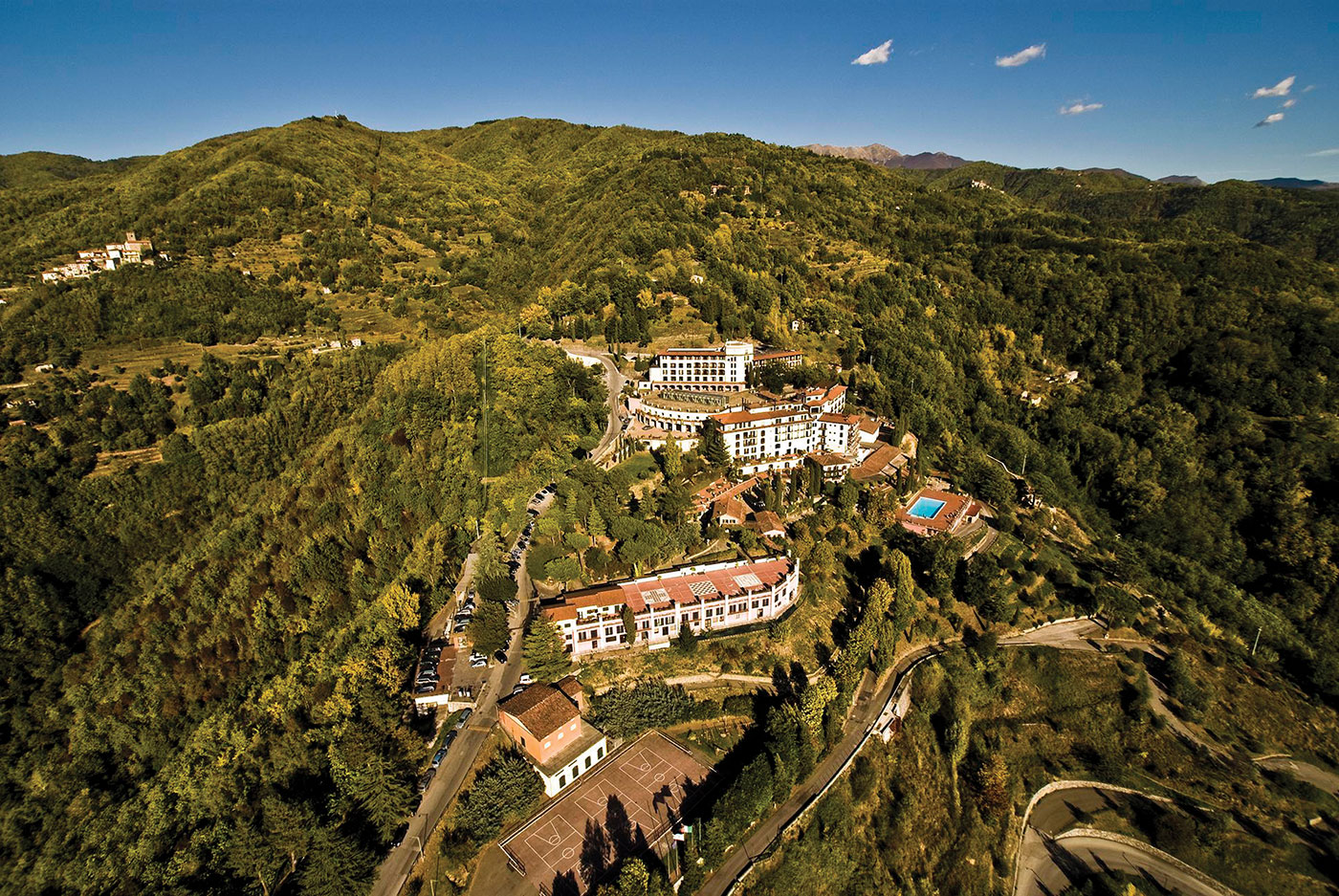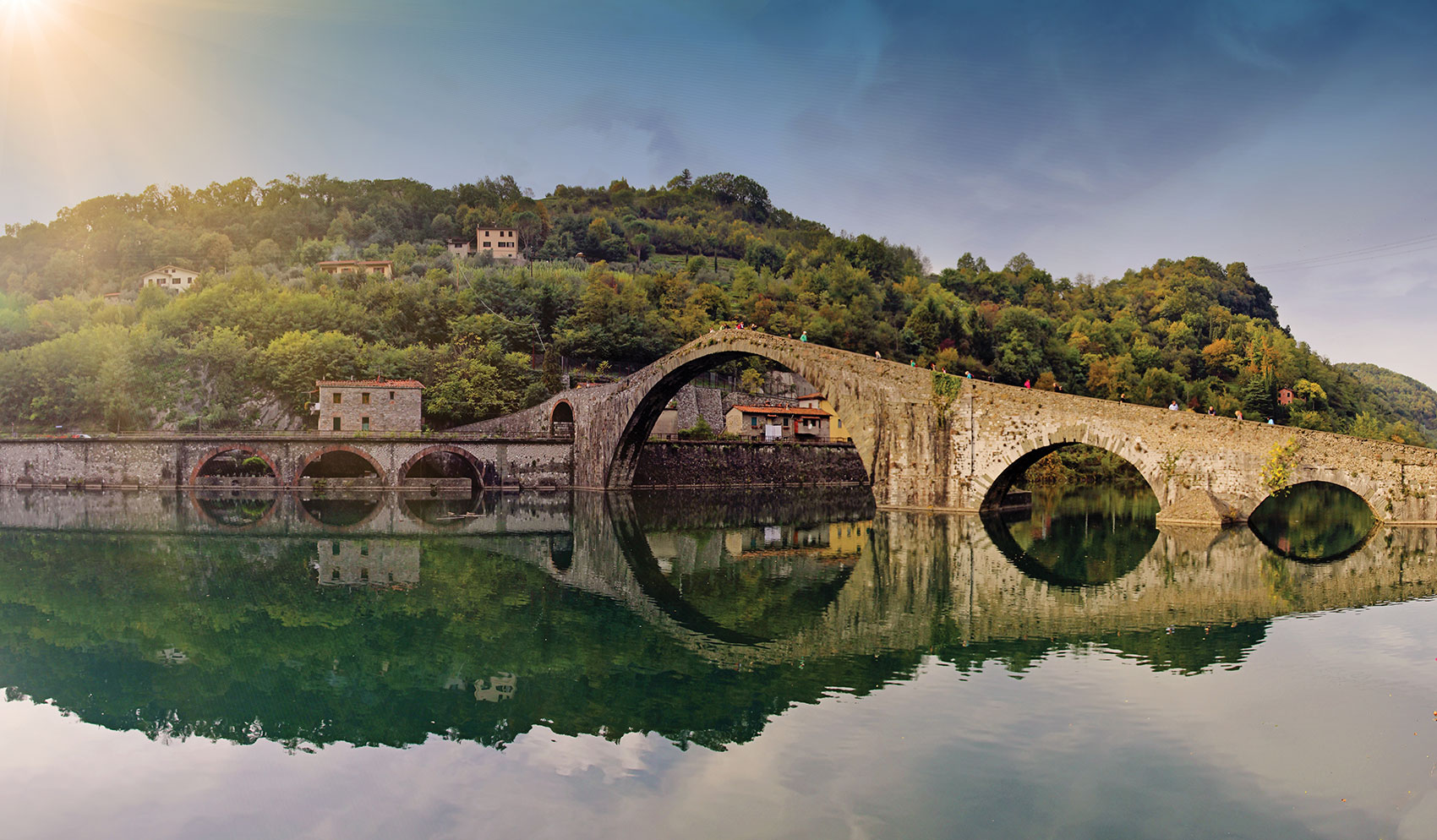—A cultural journey into the Italian countryside from the foothills of Florence to the Serchio Valley.
In the heart of central Italy, Tuscany has offered travelers the quintessential Italian experience for centuries. The narrow streets of Florence evoke the very essence of the Renaissance and the sun-soaked hills of the countryside have inspired countless pens. Tuscany has long since become a secular mecca—a cultural haven so many of us vow to see before we’re dead and gone. On my very first sojourn to the fabled region, I came for food and wine but what I left with was much more introspective than that. As I ventured deeper into the heart of Tuscany, my surroundings forced me to look inside myself and consider the appeal of life’s simple pleasures.
When I arrived in Florence in the final days of May, it was the first time in weeks the region had not seen rain (or so nearly every local couldn’t help but profess). Passing through the city of dreams I felt the presence of generations past, still alive and well in each passing brick. Locals leaned out from their windows above the façades in a most welcomed cliché, and the sun-kissed brown and yellow hues of the city turned a celestial shade of gold—as though I’d slipped into the fondest Renaissance daydream.
Il Salviatino
By the time I reached the gateway of Il Salviatino in the neighboring town of Fiesole, the feeling grew stronger. The tightly-quartered, tree-lined grounds nestled in the hillside leading up to the hotel’s main villa begged the question: Why go anywhere else in the world? Before I could even get my bearings I’d wandered off into the lush gardens. It seemed almost ethereal, peering out at a direct view of the city, where all concepts of time seemed to fade into the warm spring wind.
When I awoke for the first time at Il Salviatino, I clutched onto my espresso and swung open the old casement windows which creaked once for each decade they’d been there. Outside, an even more commanding view of Florence offered bells of the Cattedrale di Santa Maria del Fiore which echoed throughout the valley along with the picture-perfect terracotta rooftops. Frank Sinatra’s “Summer Wind” played from the room’s speakers as I relished the fragrant air. Here, I fancied myself a 19th century poet scanning the subtle beauty of the city for inspiration—that is before I surveyed the eclectic breakfast buffet, filled with variants of cornetto and every Italian delight imaginable.
Il Salviatino, which is part of an exclusive collection of Virtuoso, would serve as my first buffer between town and country before heading deeper into the heartland. Just a short 15-minute drive from Peretola Airport, the hotel’s grounds are home to 44 uniquely decorated suites, each one with its own story and blend of local artisanship. But amidst the original frescoes, antique walk-ins and mezzanine floors, I found more than just simple luxury. I found new friends and a timeless experience that simply cannot be duplicated because what Il Salviatino really feels like, is home.
Before the hotel’s current ownership, its earliest history indicates that the original structure was a Roman fortress. Its first recorded documents date back to the 14th century, when the villa was acquired by the Baldesi family. Over the centuries Il Salviatino would change hands between several of Italy’s elite, some of whom added original artwork and new renovations. By 1911, the villa was acquired by poet and art critic, Ugo Ojetti, who would spend his days admiring the views of Florence. During his tenure as owner, Ojetti added the hotel’s Greenhouse Suites and its stunning library which, at the time, was considered one of the most culturally renowned spots frequented by the likes of Salvador Dalí and Gabriele D’Annunzio (a room which I found ideal for an afternoon Aperol spritz).
During the ‘70s and ‘80s, Il Salviatino became Stanford University’s Italian headquarters and was abandoned for nearly two decades following. After a major renovation, it officially opened as a hotel in 2010 and then came under the ownership of Alessandra Rovati Vitali in 2016. Vitali’s vision is to cast aside the property’s pretentious nature in a more sophisticated and accessible fashion—while still preserving the villa’s old-world splendor. These sentiments are echoed by Il Salviatino’s CEO, Marco Milocco, who can often be spotted admiring the property’s grounds and pieces they’ve inherited from the Ritz in Paris. A native of Tuscany and seasoned hotelier, Milocco has also played a key role in the hotel’s core philosophies and offerings.
“You can have not one gram of marble, almost zero ceramic and no silver plates—but you feel the luxury. Luxury is not just money, it’s the details—the smile of the concierge who greets you. And he smiles genuinely. This is luxury,” Milocco told me. “Sure, there are five elements you need to be considered luxury: hot water, perfumed linen, good pillows, mattresses, sound-proofed rooms (maybe Wi-Fi). In Italy, there’s a phrase we say, ‘il resto è aria fritta.’ Which essentially means, ‘the rest is fried air.’”
What To Do
It was of course necessary to spend a couple days admiring the wonders of Florence, drinking wine in the streets with locals and sampling the city’s flavors. But during my first days at Il Salviatino, activities within the hotel’s grounds I’ve found were the best ways to get a glimpse of the true soul of Tuscany. Like many quintessential Italian experiences, food is never far from the subject matter, and thus is the case for Il Salviatino where the villa’s garden occupies a prominent space of the property’s whimsical 12.5 acres. Like many native Tuscans, Il Salviatino’s gardener, Lucio, takes great pride in the hotel’s vegetable garden and had no qualms about explaining to me when the moon is just right for picking Tuscan kale.
Armed with my very own cultivation kit, the vegetable garden gave me a window into its Medieval processors, following techniques used by monks hundreds of years ago: vegetables around the outside and medicinal herbs at the center. “In the Middle Age, monks would use many of these plants as medical herbs. There were no pharmacies or medicines, so people used to plant these herbs for general health and to help cure diseases,” Lucio explained as I dug my spade into the ground where, perhaps, many have before me.
Before it was time to leave Il Salviatino behind, I was introduced to Giulio Benuzzi, or as many call him, Giulio the Truffle Hunter. Benuzzi took us to forage the grounds in the hotel’s forest which, by the way, is brimming with black truffles. With his two trusty truffle dogs, Maga and Edda, leading the way, we dug up some truffles beneath what seems like centuries-old oaks for the evening’s dinner service.
Renaissance Tuscany Il Ciocco Resort & Spa
We set out on the road to Renaissance Tuscany, a scenic sanctuary inside the Serchio River Valley, and roughly over an hour drive from Florence. (Along the way, it’s advised to make a day trip to the walled city of Lucca, which is approximately midway through the drive.) We delved deeper into the countryside through the Serchio Valley where for centuries, Tuscans lived a simple yet fruitful life, and still do. While making our way through the hairpin turns to Renaissance Tuscany, I had already begun to get a sense of the region’s humble character. But it’s not until I fully engulfed myself in the local rhythm that I would truly begin to understand.
The first thing that hit me the moment I climbed out of my taxi—other than the unrelenting views of the Apennine Mountains—was the air quality. As if I had never truly breathed before, I felt my lungs fill to an unfathomable capacity. Set on nearly 1,700 acres of land, Il Ciocco as it was once called, has long been heralded as a home base for traversing the land and hunting. Over the decades, it would grow into a hotel that locals of the Lucca countryside would frequent. Eventually, they attracted tourists from all over the world and soon after, received the Renaissance name and added a meeting space and spa among other things.
The true allure of Il Ciocco comes from its location, which is characterized by 360-degree mountain views, Medieval villages and larger-than-life personalities, including the resort’s General Manager, George Midleje, who never fails to remind you that Tuscany is one of the nicest regions in Italy. “It’s old, there’s real Italian people here,” Midleje proclaimed over dinner. “It’s quite organized compared to the South, but not overtly organized like the North. Tuscany is the center of Italy; it’s a place that has everything: sun, beaches, mountains, lakes, history, cities—it’s a very complete region. The people here are particular and very attached to their territory and the different areas of Tuscany.”
“You come to Florence, but that’s not all there is to Tuscany,” Midleje added. “The more you go in to the secondary cities like Lucca, you see why. This is an unexploited Tuscany. This is easy-going. Here, people truly live. They relax. It’s 12:30 p.m., the shops are closed. Why? Everyone is at home having lunch. This valley is like a picture. After just three or four days, you don’t want to leave. It’s truly another world.”
What To Do
It was just after breakfast on the second day in the Serchio Valley, but still early enough that the misty veil had not yet lifted from the Apennines. Swallows gave chase, singing across the terrace and soon, we headed to the market in Barga, a nearby medieval village known for its imposing Duomo, Ristorante Scacciaguai and famed home of late 1800s poet Giovanni Pasocli. We rode in with Renaissance Tuscany’s head chef, Salvatore Cavallaro, who took point on the produce we’d use later that day to prepare lunch (which included my gnocchi). Vendors at the Barga market were not reluctant to have us sample their wares, which included a few bites of the best Pecorino Fiore Sardo my taste buds won’t soon forget.
While Barga’s market was a down-to-earth social affair synonymous with any visit to the Serchio Valley, the next day we pushed even deeper into the heart of Tuscany. With a morning that began at the crossing of Ponte della Maddalena (otherwise known as “The Devil’s Bridge”), we trekked further inland to Bagni di Lucca best known for its quaint medieval villages and hot springs. Each village lives a very simple lifestyle, including the first I visited, Pian di Fiume, which depends almost entirely on itself for food and resources. Or as a local put it, “Everything you eat in Pian di Fiume grew up here or is from the earth.” And that includes the pasta they hand make each morning.
The further we traversed into Bagni di Lucca, the more their history unfolded, a story of living life in a way that is much simpler than ours yet, so very pure. As I passed through carpets of wildflowers and drank from a natural spring, I couldn’t help but fathom what Emperors had marched through that very same route for safe passage to Rome.
On my final day in the Serchio Valley, we visited the birthplace of the bio-organic wine I’d been drinking throughout my stay (one which seemed to abolish the modern hangover). When it comes to wine, Tuscany, of course, has stood the test of time ever since the Etruscans cultivated the first grapes thousands of years ago. At Podere Còncori in Garfagnana, a small local vineyard that started producing wine 10 years ago, they endeavor to revive the old methods of making wine using red syrah. More than simply organic, the winery uses no chemicals in their fields. “Instead of fighting against nature, we’re trying to cooperate with the land,” they said.
As I took my final sip of Podere Còncori’s “Melograno” and looked out across the vineyard, I finally separated myself from the pulse of Florence and embraced the mist-shrouded valley before me, Midleje’s words echoing in my head: “This is an unexploited Tuscany.”
The post Tuscan Roots appeared first on VUE magazine.

